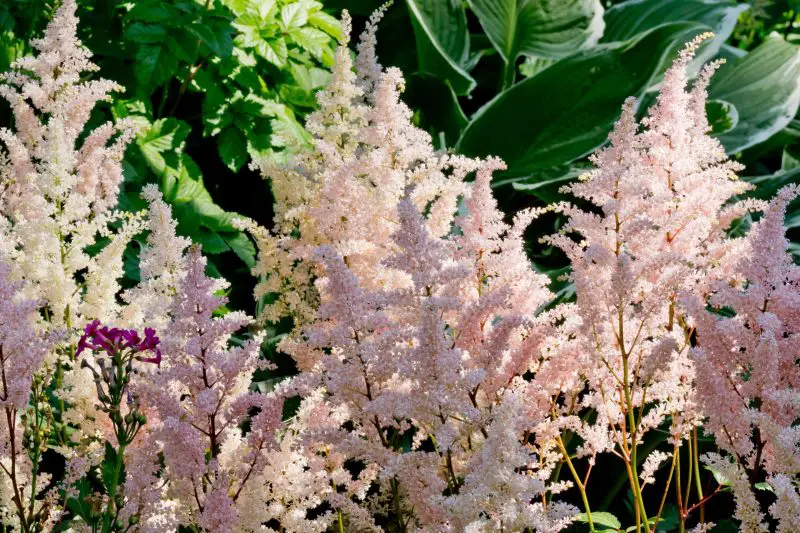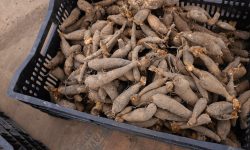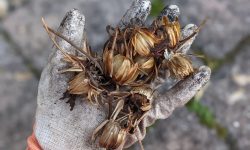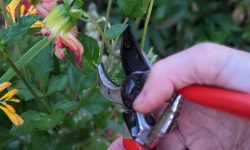Astilbe is celebrated for its feathery plumes, delicate foliage, and vibrant summer color. Many gardeners admire its ability to brighten shaded garden areas, but a common question remains: how long do astilbe bloom? Understanding the flowering period is essential for planning a continuous, colorful display. Bloom duration varies depending on the variety, climate, sunlight exposure, and care practices, making knowledge of these factors crucial for long-lasting, lush flowers.
Proper timing, location, and ongoing maintenance significantly influence bloom longevity. Choosing the right variety, providing consistent moisture, and maintaining fertile, well-drained soil help astilbe thrive. Pruning spent flowers, monitoring for pests, and mulching can further extend the flowering period. This comprehensive guide will explore the bloom cycle, seasonal care tips, propagation advice, and expert techniques to ensure astilbe plants remain healthy, vibrant, and full of colorful plumes throughout the growing season. Gardeners can enjoy a resilient and visually striking display that enhances any landscape.
Understanding Astilbe Bloom Duration

Astilbe’s bloom period is influenced by several factors, including variety, climate, and site conditions. Most common garden varieties bloom from late spring to mid-summer, typically lasting four to six weeks under optimal conditions. Some early-blooming cultivars appear in late spring, while later varieties extend flowering into late summer. Understanding these differences allows gardeners to plan sequential plantings and maintain color throughout the season.
Climate also plays a significant role in bloom duration. Cooler climates tend to prolong flowering, as lower temperatures reduce stress and slow the aging of flowers. In contrast, hot, dry conditions can accelerate bloom decline. Gardeners should provide consistent moisture and partial shade to protect the delicate plumes from heat stress, ensuring flowers last as long as possible. Soil quality, fertility, and proper mulching further enhance bloom longevity by supporting healthy root systems and maintaining optimal growing conditions.
Maintenance practices can extend flowering and improve overall plant health. Regularly removing spent flowers encourages new growth and prevents energy loss, while proper pruning and division every few years rejuvenate older plants. Fertilizing with balanced nutrients supports vigorous foliage and flowering. By combining the right variety selection, climate consideration, and attentive care, gardeners can enjoy astilbe’s lush, feathery plumes for extended periods, creating a vibrant and dynamic garden display throughout the summer months.
Choosing the Right Astilbe Varieties for Extended Bloom
Selecting the right astilbe varieties is crucial for maximizing bloom duration and overall garden impact. Early, mid, and late-blooming cultivars allow gardeners to plan a sequence of flowers, ensuring continuous color from late spring through late summer. Early varieties such as ‘Visions in Pink’ or ‘Deutschland’ begin flowering in late spring, providing an initial burst of color that sets the stage for subsequent blooms. Planting early varieties strategically ensures the garden awakens with vibrant plumes as other perennials are still emerging.
Mid-season varieties, including ‘Bridal Veil’ and ‘Fanal,’ offer vibrant, feathery plumes during peak summer, bridging the gap between early and late bloomers. Late-blooming types such as ‘Purple Candles’ or ‘Peach Blossom’ extend flowering into late summer, preventing gaps in color and keeping garden beds lively. By combining early, mid, and late varieties in layered plantings, gardeners can maintain continuous visual interest throughout the growing season. This approach not only extends bloom duration but also enhances the garden’s dynamic structure and aesthetic appeal.
Beyond bloom timing, gardeners should consider foliage, height, and flower color when selecting astilbe varieties. Different cultivars offer diverse leaf textures and plume shades of pink, white, purple, and red. Taller varieties make excellent background plants, while shorter types suit borders, rock gardens, or container planting. Additionally, selecting disease-resistant and climate-adapted varieties ensures healthier plants with prolonged blooms. Combining careful timing, variety diversity, and attention to plant characteristics allows gardeners to enjoy a full, lush, and long-lasting display of astilbe flowers, creating a vibrant and captivating garden throughout the summer.
Site and Soil Requirements for Longer Bloom
Light and Shade Considerations
Astilbe thrives in locations with partial to full shade, making it ideal for gardens with limited direct sunlight. Intense afternoon sun can scorch delicate foliage, causing wilting and shortening the bloom period. Providing morning sunlight with afternoon shade allows the plant to photosynthesize efficiently without stress. Shaded locations help maintain even soil moisture, which is crucial for sustaining vibrant plumes over several weeks.
Light exposure also influences plant structure and bloom quality. Inadequate light can produce weak stems, delayed flowering, or smaller, less vibrant plumes. For gardeners in hotter climates, additional shading or planting near taller plants or structures can protect astilbe from heat stress. Conversely, in cooler climates, a slightly sunnier location may enhance flower size and color. Choosing the right balance of sun and shade ensures the plant’s foliage remains lush and the flowers maintain long-lasting, visually striking blooms throughout the growing season. Thoughtful site selection is essential for maximizing bloom longevity and overall garden beauty.
Soil Quality and Drainage
Soil quality is a critical factor in determining how long astilbe blooms last. Rich, loamy, well-draining soil with high organic content encourages deep root development and supports healthy foliage. Poor, compacted, or sandy soil can stunt growth, reduce flowering potential, and shorten the bloom period. Amending soil with compost, leaf mold, or aged manure improves fertility, moisture retention, and structure, creating ideal conditions for sustained flowering.
Drainage is equally important to prevent waterlogged roots, which can lead to root rot and disease. Consistently moist, well-aerated soil supports strong stems and vibrant plumes. Mulching with organic material helps regulate temperature, conserve moisture, and suppress weeds, further promoting longer bloom periods. By ensuring nutrient-rich, well-drained soil, gardeners can help astilbe establish robust roots, maintain healthy foliage, and produce lush, long-lasting flowers. Proper soil preparation and maintenance are key strategies for extending the visual appeal and vitality of astilbe in the garden.
Watering and Fertilization Tips for Prolonged Blooms
Consistent Watering Practices
Astilbe requires consistently moist soil to maintain lush foliage and prolonged blooms. Irregular watering can stress the plant, causing wilting, premature flower decline, or reduced plumes. Gardeners should monitor soil moisture daily during hot weather and water deeply once or twice a week, ensuring the root zone remains damp but not waterlogged. Proper irrigation encourages deep root development, which supports extended flowering and healthy plant structure.
Mulching around the base of astilbe retains soil moisture, regulates temperature, and minimizes evaporation. During prolonged dry spells, supplemental watering is critical to maintain vibrant blooms and prevent stress-related decline. Avoid overwatering, as saturated soil can lead to root rot and fungal infections. By carefully balancing water supply, gardeners can enhance the longevity of blooms, sustain lush foliage, and create a garden display full of vibrant, feathery plumes that remain attractive throughout the growing season. Consistent attention to moisture is essential for maximizing bloom duration.
Fertilization for Extended Bloom
Proper fertilization provides essential nutrients that promote healthy roots, robust foliage, and long-lasting blooms. A slow-release, balanced fertilizer applied in early spring supports initial growth, while liquid feeding every few weeks during the flowering season boosts energy for extended plumes. Gardeners in nutrient-poor soils may need additional feeding to sustain optimal flowering.
Organic matter such as compost or well-rotted manure improves soil fertility, texture, and moisture retention naturally. Excess nitrogen should be avoided, as it can encourage leafy growth at the expense of flowers. Combining careful fertilization with consistent watering and healthy site conditions ensures astilbe remains vigorous, producing lush, colorful blooms for an extended period. Thoughtful nutrient management strengthens plant resilience, maintains foliage health, and supports a long, vibrant flowering season that enhances overall garden beauty and impact.
Deadheading and Pruning Techniques to Maximize Bloom
Deadheading Spent Flowers
Regular deadheading is essential for extending astilbe’s bloom period. Removing faded or spent flowers prevents the plant from diverting energy into seed production, allowing it to focus on producing new plumes. Gardeners should use clean, sharp scissors or pruners to snip off flower stalks just above the base of the foliage. This simple practice encourages continuous flowering and maintains a neat, attractive garden appearance throughout the season.
Deadheading also reduces the risk of disease by eliminating decaying plant material that can harbor fungi, pests, or bacteria. Consistent removal of spent blooms promotes stronger stems and healthier leaves. When combined with proper watering, fertilization, and soil care, deadheading ensures that astilbe plants produce vibrant, feathery plumes for an extended period. Gardeners who regularly remove old flowers enjoy a longer, more dynamic display of color and texture, keeping garden beds visually appealing and thriving from early summer through late season.
Pruning for Plant Health
Pruning astilbe is important for maintaining overall plant health and long-term bloom potential. Cutting back old, damaged, or overcrowded stems in early spring allows new shoots to emerge vigorously and supports strong flower production. Removing dead or weak stems also improves air circulation, reducing the risk of fungal infections and pest infestations that can compromise bloom quality.
Pruning rejuvenates older clumps, preventing them from becoming woody or sparse while encouraging compact, well-structured growth. Strategic pruning combined with routine deadheading helps maintain consistent bloom quality and prolongs the flowering period. By ensuring that plants are healthy, vigorous, and free of damaged material, gardeners can enjoy lush foliage, abundant flowers, and a visually striking garden. Proper pruning is a key practice for sustaining long-lasting, colorful, and feathery astilbe blooms that enhance the landscape.
Dividing Astilbe to Promote Longer Bloom
Dividing astilbe is an effective technique for rejuvenating older plants and extending their flowering period. Over time, clumps can become crowded, reducing airflow and nutrient availability, which may result in fewer blooms. By carefully separating these plants every three to four years, gardeners can encourage healthier growth and more vibrant flowers. Spring or early fall is the ideal time for division, as the plant is less stressed and can establish roots quickly in its new location.
The process begins by digging up the entire clump and gently shaking off excess soil. Gardeners should identify natural divisions with at least three to five healthy shoots per section. Cutting through the crown with a clean, sharp knife ensures minimal damage while creating multiple new plants. Each division should be replanted promptly in fertile, well-drained soil, maintaining consistent moisture to support root development. Proper spacing between divisions allows for adequate airflow, reducing disease risk and promoting stronger, more prolific blooms.
Regular division not only enhances flowering but also improves overall plant health. Rejuvenated clumps produce sturdier stems, more abundant foliage, and a longer bloom period. Gardeners can strategically divide astilbe to maintain a continuous sequence of blooms throughout the growing season. Combining division with proper site selection, soil care, watering, and maintenance ensures that astilbe plants remain lush, healthy, and capable of producing vibrant, feathery plumes year after year. This practice is essential for sustaining a dynamic and visually appealing garden display.
Pest and Disease Management for Longer Bloom
Common Pests Affecting Astilbe
Astilbe can be susceptible to several common garden pests, including aphids, slugs, and spider mites. Aphids feed on plant sap, causing leaves to curl, yellow, and become distorted, which reduces the plant’s energy for flower production. Slugs and snails target tender foliage and flower buds, potentially shortening the bloom period. Spider mites thrive in dry, hot conditions and can lead to stippling, yellowing, and leaf drop, further stressing the plant.
Regular monitoring allows gardeners to catch infestations early. Aphids can be removed with a strong water spray, insecticidal soap, or by introducing beneficial insects such as ladybugs and lacewings. Slugs can be managed using traps, barriers, or natural predators. Maintaining proper soil moisture, mulching, and ensuring good airflow reduces plant stress, making it less susceptible to pest damage. By proactively managing pests, gardeners can protect both foliage and flowers, ensuring astilbe continues producing lush, vibrant blooms throughout the season. Early intervention prevents minor pest problems from escalating and compromising bloom longevity.
Disease Prevention and Care
Astilbe is prone to fungal diseases such as powdery mildew, leaf spot, and root rot, particularly in humid or poorly ventilated areas. Powdery mildew appears as a white, powdery coating on leaves, reducing photosynthesis, while leaf spot produces brown or black lesions that weaken stems and foliage. Root rot develops in waterlogged soil, leading to stunted growth and premature flower loss.
Preventive measures include planting in well-drained soil, spacing plants adequately to promote airflow, and promptly removing infected leaves to limit pathogen spread. Mulching reduces soil splash that carries fungal spores. Watering at the base rather than overhead keeps foliage dry, minimizing disease risk. In severe cases, gardeners can apply appropriate fungicides to control infections. By combining vigilant observation, preventive care, and timely treatment, gardeners can maintain healthy foliage and support longer flowering periods. Effective disease management ensures astilbe remains vigorous, producing vibrant, feathery plumes throughout the growing season.
Seasonal Care Tips to Extend Astilbe Bloom
Spring Care
Spring is the ideal time to prepare astilbe for a healthy and long-lasting bloom season. Gardeners should carefully remove debris, dead foliage, and old mulch accumulated over winter. Clearing the garden bed improves air circulation, which reduces disease risk and stimulates new, vigorous growth. Fertilizing with a balanced, slow-release fertilizer ensures the plant receives essential nutrients for strong stems, vibrant flowers, and robust foliage that will support weeks of stunning blooms.
Spring is also the perfect time to inspect plants for any winter damage. Any damaged or weak shoots should be removed, and new divisions or relocated older clumps should be planted promptly to establish roots before the heat of summer. Consistent watering is crucial for young shoots, and applying a fresh layer of mulch around the base helps retain soil moisture, regulate temperature, and suppress weeds. Proper spring care sets a solid foundation for extended bloom, encouraging lush foliage and abundant, colorful plumes that enhance the overall garden display throughout the season, ensuring a healthy, long-lasting flowering period.
Spring Care
Spring is the ideal time to prepare astilbe for a healthy and long-lasting bloom season. Gardeners should carefully remove debris, dead foliage, and old mulch accumulated over winter. Clearing the garden bed improves air circulation, which reduces disease risk and stimulates new, vigorous growth. Fertilizing with a balanced, slow-release fertilizer ensures the plant receives essential nutrients for strong stems, vibrant flowers, and robust foliage that will support weeks of stunning blooms.
Spring is also the perfect time to inspect plants for any winter damage. Any damaged or weak shoots should be removed, and new divisions or relocated older clumps should be planted promptly to establish roots before the heat of summer. Consistent watering is crucial for young shoots, and applying a fresh layer of mulch around the base helps retain soil moisture, regulate temperature, and suppress weeds. Proper spring care sets a solid foundation for extended bloom, encouraging lush foliage and abundant, colorful plumes that enhance the overall garden display throughout the season, ensuring a healthy, long-lasting flowering period.
Summer Care
During summer, astilbe requires vigilant maintenance to sustain vibrant flowers and lush foliage. Deadheading spent blooms encourages the plant to focus energy on producing new plumes, extending the flowering period and keeping the garden visually appealing. Gardeners should provide consistent watering, particularly during hot or dry spells, to prevent wilting, leaf scorch, and premature flower decline. Regular monitoring for pests such as aphids, spider mites, and slugs ensures early intervention before significant damage occurs.
Maintaining soil moisture with organic mulch reduces heat stress and helps retain nutrients, while light, regular fertilization during peak bloom supports continuous growth and abundant flower production. Providing temporary shade during extreme heat prevents leaf burn, and proper pruning of weak stems improves airflow and plant structure. By combining watering, fertilization, pest management, and attentive care, gardeners ensure that astilbe maintains strong foliage, vibrant flowers, and a long-lasting display. Summer care is critical for extending the blooming period and achieving a lush, healthy garden full of color and texture.
Fall Care
In fall, gardeners prepare astilbe for winter dormancy while supporting the final stages of flowering. Removing faded flowers and cutting back damaged foliage allows the plant to conserve energy for root development and strengthens the plant for the next season. Fertilizing with a low-nitrogen formula enhances root growth, cold resilience, and overall plant vigor, supporting regrowth and robust blooms in spring.
Maintaining slightly moist soil prevents desiccation as temperatures drop, while applying a thick layer of mulch insulates roots from frost and sudden temperature fluctuations. Fall is also ideal for inspecting plants for disease or pest issues, removing affected leaves, and treating infestations before winter. By providing attentive autumn care, gardeners ensure astilbe emerges vigorous with strong roots and healthy crowns, ready for an extended bloom next season. Proper fall preparation is essential for sustaining flower longevity, promoting lush foliage, and supporting long-term plant vitality throughout the garden.
Winter Care
During winter, astilbe enters dormancy, but proper protection is critical for long-term health and future bloom. Mulching with straw, shredded leaves, or bark insulates roots against freezing temperatures and harsh winds, preventing frost heaving and potential root damage. Gardeners should avoid excessive pruning, as dormant stems shield crowns and protect plant structure.
Ensuring proper soil drainage prevents waterlogged conditions that can cause root rot. Winter is also a time for planning next season’s garden layout, selecting new varieties, or identifying areas for division. Monitoring for disease or pest overwintering is important, even during dormancy, to prevent early-season infestations. Protecting astilbe during this period promotes healthy regrowth, strengthens stems, and supports abundant, long-lasting blooms in the coming season. Thoughtful winter care ensures a visually striking garden, maintains vibrant foliage, and extends the flowering period, keeping astilbe plants healthy, resilient, and full of feathery plumes year after year.
Reviving Weak or Overgrown Astilbe
Over time, astilbe clumps can become overcrowded or weakened, reducing bloom quality and overall plant vigor. Reviving these plants begins with careful inspection of each clump. Gardeners should remove any dead, damaged, or diseased stems to allow healthy shoots to thrive. This process also improves air circulation, reducing the risk of fungal infections and pest infestations. Removing older, woody stems encourages new growth from the crown, leading to stronger, more vigorous flowering.
For overgrown clumps, division is often necessary. Carefully digging up the plant and separating it into smaller sections ensures each division has several healthy shoots and a strong root system. Replanting divisions in well-prepared soil with adequate spacing allows the plants to establish quickly, promoting robust growth. Applying a layer of organic mulch around the base helps retain soil moisture, regulate temperature, and prevent weed competition, all of which are crucial for recovery.
Consistent care following division or pruning is essential. Regular watering, fertilization with a balanced formula, and ongoing deadheading help weak or overgrown astilbe regain strength and bloom more profusely. Monitoring for pests and disease ensures the rejuvenated plants remain healthy. With careful attention, gardeners can restore vitality to struggling astilbe clumps, resulting in lush foliage and abundant, feathery plumes that enhance the garden for an extended flowering season. This revitalization process ensures long-term beauty and sustained bloom performance year after year.
Choosing the Right Varieties for Longer Bloom
Selecting the right astilbe varieties is crucial for ensuring a longer and more consistent flowering season. Different cultivars bloom at varying times, ranging from early to late summer. By planting a combination of early, mid, and late-blooming varieties, gardeners can enjoy a continuous display of colorful plumes. Consider the height, color, and texture of each variety to create a visually appealing arrangement that complements your garden’s design.
Early-blooming varieties such as ‘Fanal’ and ‘Bridal Veil’ provide initial bursts of color in late spring or early summer. Mid-season types like ‘Europa’ and ‘Visions’ extend the flowering period into midsummer, while late-blooming varieties such as ‘Pumila’ and ‘Rheinland’ carry the display into late summer. Mixing these varieties ensures staggered flowering, preventing gaps in color and maintaining interest throughout the season. Gardeners should also consider the plant’s growth habit and resistance to disease when choosing cultivars.
In addition to bloom timing, selecting disease-resistant and vigorous varieties reduces maintenance and supports overall plant health. Robust plants withstand heat, humidity, and occasional drought better, producing more consistent blooms year after year. Combining careful variety selection with proper site preparation, soil care, watering, and regular maintenance maximizes the flowering potential of astilbe. Thoughtful planning in choosing the right varieties results in extended, lush blooms, vibrant foliage, and a dynamic, visually striking garden that remains attractive from early summer through late season.
Common Mistakes to Avoid When Growing Astilbe
Overwatering or Underwatering
One of the most common mistakes when growing astilbe is inconsistent watering. While these plants thrive in consistently moist soil, overwatering can lead to root rot, and underwatering can cause wilting, weak stems, and reduced blooms. Gardeners should monitor soil moisture carefully, ensuring it stays damp but not waterlogged. Using mulch helps retain moisture and reduces the frequency of watering, while improving soil structure and reducing stress on roots.
In addition, irrigation should focus on the base of the plant rather than overhead to prevent fungal diseases on foliage. Newly planted divisions or young seedlings are especially sensitive to water stress, requiring extra attention during hot or dry spells. By providing the right balance of moisture, gardeners promote healthy root systems, stronger stems, and abundant flowers, avoiding common problems caused by improper watering. Consistent hydration supports long-lasting blooms and vibrant foliage throughout the growing season.
Poor Site Selection
Another frequent mistake is planting astilbe in unsuitable conditions. These plants prefer partial shade to full shade and thrive in rich, well-drained, and consistently moist soil. Placing them in full sun without adequate water can cause leaf scorching, faded flowers, and shortened bloom periods. Conversely, overly shaded or waterlogged sites may reduce flower production and increase susceptibility to fungal diseases.
Gardeners should assess sunlight exposure and soil type before planting. Improving poor soil with compost or organic matter enhances fertility, drainage, and moisture retention. Proper site selection ensures astilbe can establish strong roots, maintain lush foliage, and produce abundant, colorful plumes. Avoiding these mistakes results in healthier, more vigorous plants and maximizes flowering potential, providing a long-lasting and visually striking garden display.
Tools and Techniques for Optimal Growth
Proper tools and techniques are essential for maintaining healthy astilbe and maximizing bloom potential. Using sharp, clean pruning shears ensures precise cuts that reduce damage to stems and prevent disease. Hand trowels and spades are useful for planting divisions and preparing soil, while gloves protect hands from irritation. Maintaining tools by cleaning and disinfecting them after each use reduces the risk of spreading pathogens, which is particularly important for plants prone to fungal infections.
In addition to tools, gardeners should focus on proper planting techniques. Planting astilbe at the correct depth and spacing allows adequate air circulation, reducing disease risk and promoting strong growth. When dividing older clumps, ensure each section has at least three healthy shoots and a well-developed root system. Backfilling with nutrient-rich soil and gently firming it around the roots helps plants establish quickly. Mulching around the base retains moisture, regulates temperature, and suppresses weeds, contributing to healthier, more vigorous plants.
Watering and fertilization techniques also play a key role. Drip irrigation or watering at the base prevents foliage wetting, which minimizes fungal disease. Balanced fertilization at planting and during the growing season supports lush foliage and abundant blooms. Combining the right tools with proper planting, pruning, and care techniques ensures astilbe grows strong and produces vibrant flowers year after year. Consistent attention to both tools and techniques maximizes growth, extends bloom duration, and enhances overall garden beauty.
FAQ About How Long Do Astilbe Bloom
How often should I water astilbe?
Astilbe thrives in consistently moist soil. Water deeply once or twice a week, adjusting for rainfall and temperature. Avoid letting the soil dry out completely, as this can stress the plant and reduce bloom quality. Mulching helps retain moisture and keeps roots cool during hot summer months.
When is the best time to plant astilbe?
The ideal time to plant astilbe is in spring or early fall. Planting during these seasons allows roots to establish before extreme heat or cold. Ensure the site has partial to full shade and rich, well-drained soil. Proper timing promotes healthy growth and encourages long-lasting, vibrant blooms.
How can I extend the bloom period of astilbe?
To prolong flowering, plant a mix of early, mid, and late-blooming varieties. Deadhead spent flowers regularly, maintain consistent watering, and fertilize lightly during the growing season. Proper site selection, soil care, and seasonal maintenance also support extended bloom and enhance plant vigor.
What are common problems affecting astilbe bloom?
Astilbe can suffer from wilting, fungal diseases, and poor flowering due to improper watering, inadequate sunlight, or nutrient deficiencies. Overcrowding and insufficient soil preparation also reduce bloom quality. Monitoring plants, maintaining proper spacing, and addressing pests promptly help ensure healthy, long-lasting blooms.
How do I divide and propagate astilbe?
Divide astilbe every 3–4 years in early spring or fall. Carefully lift the clump, separate healthy shoots with roots, and replant them in enriched, well-drained soil. Dividing overcrowded clumps encourages vigorous growth, stronger stems, and abundant flowering, ensuring the garden remains lush and colorful year after year.
Conclusion
Astilbe is a stunning addition to any garden, offering vibrant plumes and lush foliage. By understanding its growth habits, selecting the right varieties, and providing proper care, gardeners can enjoy long-lasting, abundant blooms. Attention to seasonal maintenance, correct watering, fertilization, and pest management ensures plants remain healthy and vigorous. Avoiding common mistakes like overwatering or poor site selection maximizes flowering potential. With careful planning and consistent care, astilbe can thrive year after year, bringing continuous color, texture, and elegance to your garden. Mastering these techniques guarantees a thriving, beautiful landscape.






